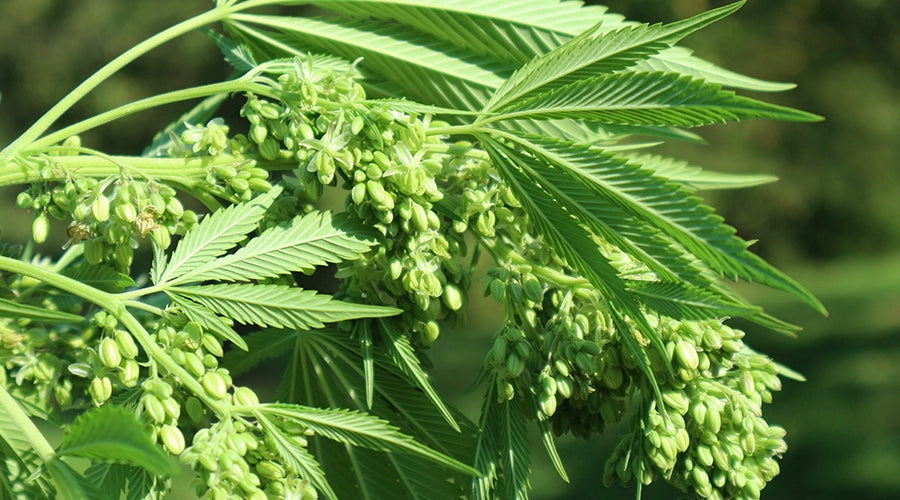
The Male Cannabis Plant: A Comprehensive Guide to its Biology and Uses
Cannabis is a highly versatile plant species best known for its psychoactive properties. It is widely cultivated and used for both recreational and medicinal purposes. The plant has two primary types: Cannabis Sativa and Cannabis Indica, which are further differentiated based on their characteristics, growth patterns, and effects. Among these two primary types, there is also a third and less well-known type - the male cannabis plant. While female plants are more commonly cultivated and used, the male plant plays an important role in the growth and reproduction of the species.

Growth Patterns and Significance of the Male Cannabis Plant
The male cannabis plant is typically smaller and less robust compared to the female plant. It lacks the distinctive buds and high levels of THC (tetrahydrocannabinol) that are associated with female plants and are sought after by cultivators and consumers alike. Instead, male plants are characterized by their high levels of CBD (cannabidiol), which is a non-psychoactive compound found in the plant. This makes the male plant less attractive to those who are looking for the “high” associated with cannabis use, but it does have potential therapeutic applications, particularly in the treatment of anxiety, depression, and other medical conditions.
The growth pattern of the male cannabis plant is different from that of the female. Male plants typically grow taller and have fewer branches, which makes them easier to identify and remove. This is important because male plants are not desirable for cultivation, as they do not produce the buds that are used for consumption. Male plants typically begin to flower about a week or two before female plants, and they release pollen that fertilizes the female flowers, leading to the production of seeds. This is an important aspect of the life cycle of the plant, as it ensures that future generations of the species can be produced and continue to thrive.
Understanding the Male Cannabis Plant: Challenges, Considerations, and Significance
It is also worth noting that the cultivation of male cannabis plants has its own unique challenges and considerations. For example, male plants are more susceptible to disease and pests compared to female plants, as they do not produce the resin that acts as a natural defense against these threats. As such, cultivators need to be particularly vigilant in monitoring and protecting their male plants and may need to take additional steps to prevent disease and pest infestations.
The identification of male plants can be challenging, as they do not typically exhibit the distinctive characteristics of female plants until they reach maturity. As a result, cultivators need to be patient and observant in order to accurately identify and remove male plants in a timely manner. This is important, as the presence of male plants can have a negative impact on the yield and potency of female plants, as well as the quality of the final product.
The Benefits and Risks of the Male Cannabis Plant: An Analysis of its Therapeutic and Cultural Significance
In addition to its role in reproduction, the male cannabis plant also has other potential uses. For example, it can be used as a source of fiber, as the stalks and stems of the plant contain long, strong fibers that can be used in textiles and other materials. This makes the male plant an attractive option for industrial and commercial purposes, particularly in regions where the use of hemp (a variety of cannabis plant) is legal and regulated.
It is important to recognize the cultural and social significance of the male cannabis plant. For centuries, the plant has been used for both recreational and medicinal purposes and has played an important role in many societies and cultures around the world. In some regions, the plant is revered as a sacred and medicinal herb, while in others, it is stigmatized and criminalized. Despite these differing perspectives, it is important to understand the significance of the male cannabis plant in order to appreciate the full range of benefits and risks associated with its use.
The leaves and flowers of the male plant can also be used for making tea or tinctures, as they contain high levels of CBD. This non-psychoactive compound has been found to have therapeutic effects, particularly in the treatment of anxiety, depression, and other medical conditions. As a result, the male cannabis plant has gained increasing attention from the medical community, and research is underway to explore its full potential for use in treating a range of health conditions.
It is important to note that while the male plant may have potential therapeutic applications, it is also illegal in many parts of the world and its use may carry legal and health risks. As such, individuals who are interested in using the male cannabis plant for therapeutic purposes should be aware of the laws and regulations in their area and consult with a healthcare professional before using it.
In conclusion, while the male cannabis plant is often overlooked and dismissed as unimportant, it plays a vital role in the growth and reproduction of the species. Its unique characteristics, including its high levels of CBD, make it an important plant for both therapeutic and agricultural purposes. Whether you are a cultivator, consumer, or simply interested in learning more about this fascinating species, it is important to understand the significance of the male cannabis plant and to approach its use with caution and awareness of the risks and benefits involved.
